
 |
Nems-Clarke 1906 Receiver |
| Front | Inside | Back | Low band tuner | High band tuner |
| Front left | Front center | Front right | Tuning gears | Block diagram |
| Catalog page (1906 and 1907) | Comparison to CEI 901 receiver | |||
 |
Nems-Clarke 1906 front panelThe Nems-Clarke 1906 is arguably one of the first modern, compact surveillance receivers. The front panel was only 3-1/2" high and the unit weighed a little under 25 lbs. The size and weight were a fraction of contemporary VHF surveillance receivers like the Motorola R-220. The performance was outstanding for its day. This receiver, which was probably designed in the mid 1950s, more than holds it's own in terms of sensitivity and selectivity with all but the best modern receivers. |
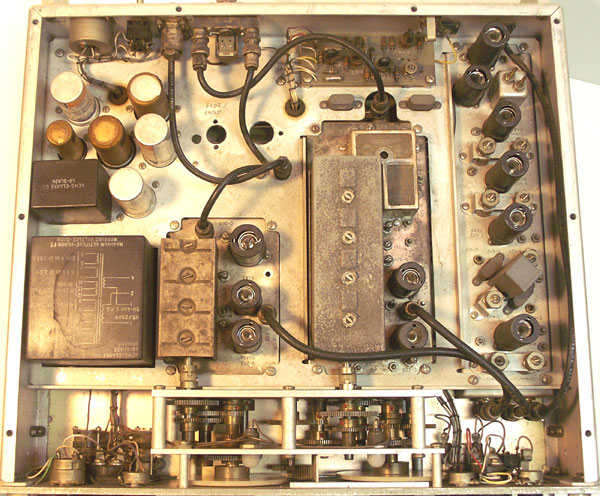 |
Nems-Clarke 1906 top insideThe 1906 packed a lot of circuitry in a small package. The design is all 7 and 9 pin "miniature" tubes except for a trio of 7077 ceramic planar vacuum tubes in the high band tuner. A 21.4 MHz McCoy crystal filter provides excellent 20 kHz narrow band selectivity. The audio output is very low, less than 1 mW. I purchased this unit with a poorly designed modification which added a 12AX7 and 6AQ5 audio power output stage. The filament demand of the 6AQ5 overheated the power transformer which leaked tar onto the bottom panel of the radio. Fortunately the power transformer was not permanently damaged and I was able to remove the modification leaving only the two unsightly holes visible near the top center in the picture above. |
 |
Nems-Clarke 1906 rear panelNot much to the rear panel. There is an "N" connector to connect antennas to each tuner. Two BNCs for accessories, the 21.4 MHz spectrum display unit (SDU) output and the video output. The 1/4" phone jack above and to the right of the video output is part of the previous owners audio modifications. A Hubbell twist lock power connector and a voltage switch complete the view. |
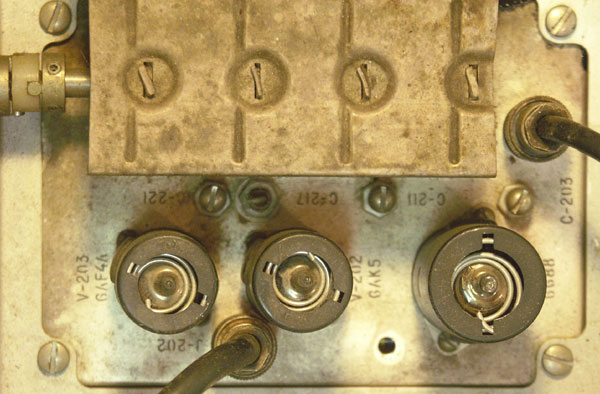 |
Nems-Clarke 1906 low band tunerThe low band tuner (30-60 MHz) uses the rare 6688 miniature tube for the RF amplifier stage (right most inside black shield). If you decide to get one of these radios, lay a spare away if you can because they can be very difficult to find and expensive. It is a nice, quiet tube and works very well in this application. The other two tubes are very common and inexpensive. |
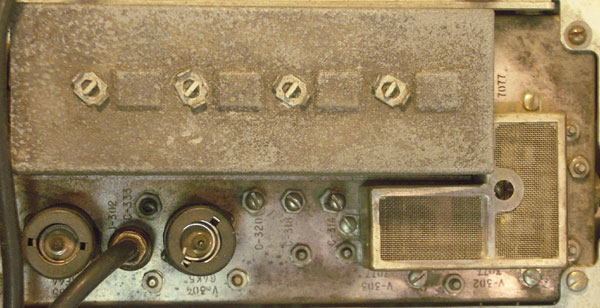 |
Nems-Clarke 1906 high band tunerThe high band tuner (60-260 MHz) uses two common miniature tubes and three 7077 ceramic planar triodes (under the screened L shaped shield). The 7077 is a low noise vacuum tube that was unequalled in VHF and UHF RF receiver applications. The long rectangular box across the top is a Mallory Inductuner. The Inductuner is the one of the keys to the excellent performance of this radio, particularly its stability at these high frequencies. |
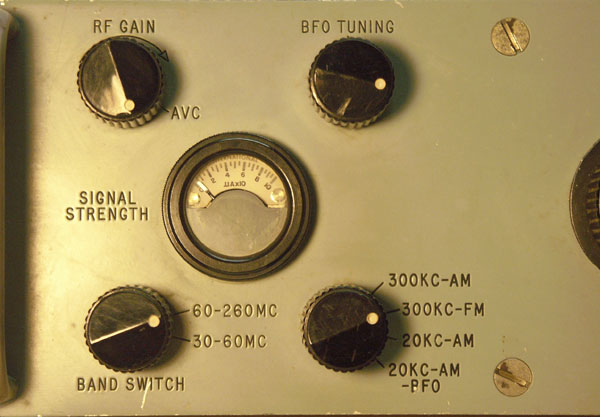 |
Nems-Clarke 1906 front panel - left side closeupA close up of the left side of the front panel reveals some of the operating controls. The bandwidth selection is rather inconveniently tied to the mode switch. It is strange that 20 kHz bandwidth cannot be selected for FM operation. |
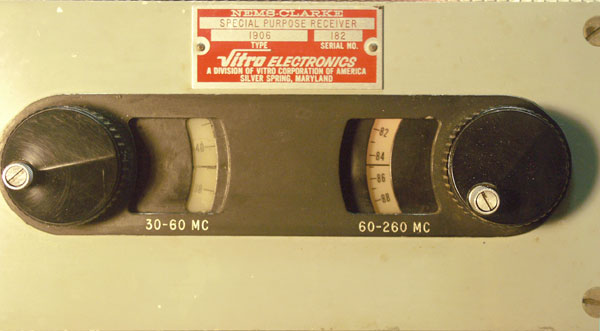 |
Nems-Clarke 1906 front panel - tuning dial closeupThe tuning knobs and displays on the 1906 follow in a long line of Nems-Clarke radios with spiral dials and moving crescent shaped windows. The action is very smooth with no noticeable backlash and excellent readability. The dial for the band in use is back lit. This radio was manufactured after the large defense contractor Vitro Corporation had absorbed Nems-Clarke. All the examples of this model I have seen are labeled "special purpose receiver." |
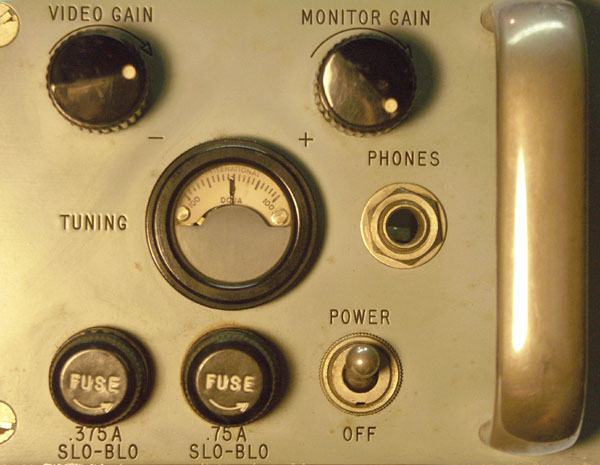 |
Nems-Clarke 1906 front panel right side closeupThe right side of the front panel contains a few self explanatory controls. According to the manuak, the phone jack supplies "0.7746 volts in 2000 ohms", a very low level output. This partially explains the reasoning of someone who hacked this radio to add the 12AX7 and 6AQ5 audio output stages. The fuses on the front panel are for B+ and line respectively |
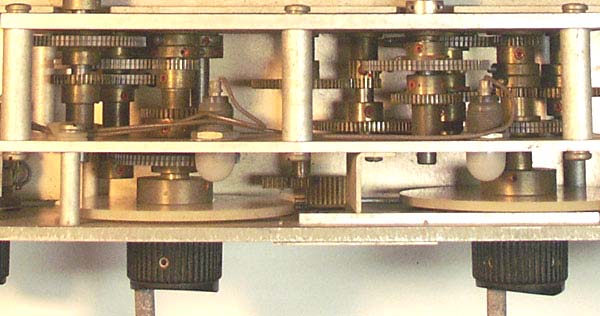 |
Nems-Clarke 1906 tuning mechanismThe tuning mechanism on the 1906 is very well designed. In the lower center you can see the rack and pinion that moves the tuning window for the high band (right dial). |